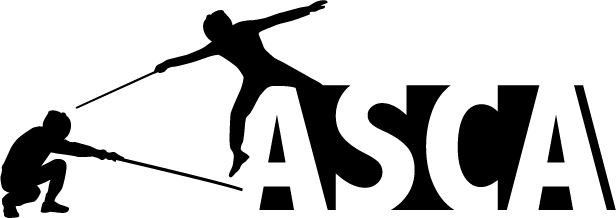French stick figthing method or « Canne de combat »
The French “canne d’arme” (or walking stick) is a wooden (chestnut) stick 95 cm long, with a diameter of 1.5 cm at the tip and 1.8 cm at the base.
In his competition form, it represents 2 assaults of 3 minutes at most, in which two « tireurs » must mark points. The assault takes place in a circle of 9 meters of diameter. Displacements in this circle are very important.
For each movement, note the following principles :
– the cane is held in one hand, near the base (without taking up too much of the stick)
– the movements are full, sweeping movements which are, above all, carried out with the arm fully extended
– the starting position is always « en garde »: the grasp defines the guard (for example: right hand at the base of the cane, right foot slightly advanced), the body facing an imaginary opponent. In this way, each move of the cane implies a transfer of weight either to the front leg or to the back leg (balancing the weight of the body)
– the impact areas are the head, the sides and the tibias; in this case, make a front or back lunge
each movement is made without violence and without force of impact – this is a sport.
The different blows are chained, allowing to create many combinations (circle, change of guard, change in the strike surfaces…)
The French cane is associated with six movements :
“brisé”,
“latéral extérieur”,
“latéral croisé”,
“enlevé”,
“croisé tête”
“croisé jambe”.
“brisé” : begins with a vertical flourish. The impact area is above the head. The right arm (for a right guard) produces a forward-rearward piston then forward to touch. The cane turns in the hand and makes a three quarter rotation. It is important to make sure of the vertical trajectory of this stroke.
“latéral extérieur” : is a blow with an horizontal flourish made above the head. The impact area is located on the sides of the opponent’s head. The stroke is armed when the tip of the cane is pointing toward your opponent. The cane is held above the head, with the right hand behind the axis of the shoulders.
for “latéral croisé”, the tip of the cane always points toward the opponent but the arm is crossed in front of the face. For the “latéral extérieur” and the “latéral croisé”, you can touch the right or left side of the head, the sides, or the tibias by lunging.
“Croisé tête” is made with the tensed arm making a left circle to the head of your opponent.
“Croisé jambe” is the same stroke in reverse, aimed at the opponent’s tibia.
Lastly, the “enlevé” is performed with a reverse flourish to the opponent’s tibias.
The blows’s characteristic is that there is systematically a rotation of the canne.
This rotation allows a big impact speed. The goal not to hit strong, but to touch the strike surface.
This sport is very complete, with a quick apprenticeship, and is especially accessible to the children, who find a very playful side in!
